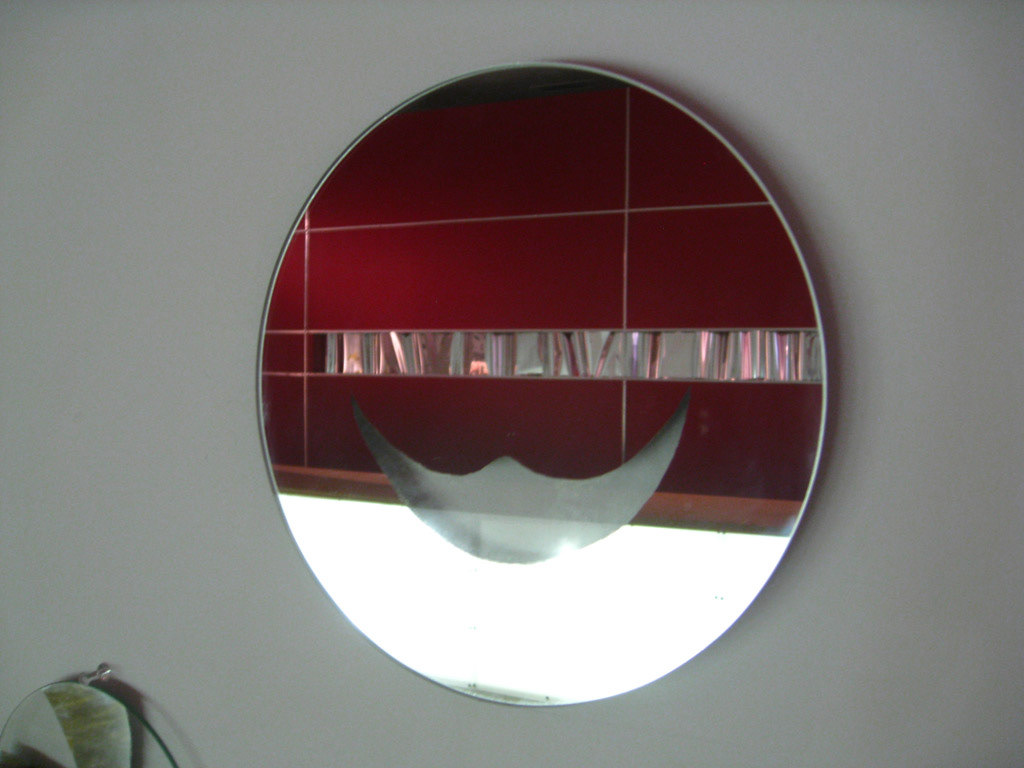
My graduate thesis for Master of Art in Environmental Graphic Design was a project encompassing both theory and practice. The goal of the thesis was to explore how the built environment can be utilized as a storytelling medium, as a device for delivering a fictional narrative. The story I chose to represent was Alice in Wonderland, which is both known to many people and has been shown in many other creative mediums. This provided a baseline with the same content for comparison purposes.

Rather than simply making a space from Alice, like recreating a scene of the Mad Tea Party or the Queen of Heart's Garden, I sought to distill the story down to its most critical element, its core theme. As many papers about Alice have discovered, the most important facet is the idea of nonsense. All the adventures of the titular child whirl around the fact that she has fallen into a world that does not conform to her expectations. In order to communicate the theme of nonsense, I set about creating nonsensical architectural elements, elements that defy expected uses.

Nonsense is not absurdity. Nonsense is not randomness or gibberish. Nonsense conforms to a system of rules and syntax, a system that is self generated. This is true for both language and architecture, both are governed by logical systems. Nonsense arises when expectations are defied, when semiotic communication clashes against applied function.

A rabbit could get through the hole, but a human must go around.
One of the architectural elements I used was the door. Nominally, a door serves as a portal between spaces, puncturing a barrier. To make the door nonsensical I turned it into a barrier. The door still looks like a door, it still communicates its use as a door. It has hinge and handle. But its function is as a barrier, one that a person must go around to pass rather than through.

Treadless stair
I used a number of architectural elements in this way, subverting their nominal uses and creating a logical system that pertains only to the exhibition space. Mirrors show distorted reflections, signs contradict themselves, stairs have no treads, and sinks dispense light.

The Hall of Doors

The Hall of Doors
These elements were grouped into spaces to convey the narrative of the story. I crafted them to tell of an alternative adventure in Wonderland. The first space is the Hall of Doors, where Alice landed after falling down the rabbit hole. In Carroll's original, these doors were all locked. I imagined the exhibition as a space that existed behind one of these other doors. In this iteration, Alice follows a Black Rabbit instead of the White Rabbit, and it takes her and the user on a different journey, but still communicates the same theme of nonsense.

The Hall of Mirrors, with mylar as contortable mirrored strips.
The second space was the Hall of Mirrors. Here mirrors provided distorted reflections. Some were bent like funhouse mirrors, some had their silvering removed to only reflect in part. I also created a corner mirror to reverse the mirror's original reversal and an infinity mirror to reflect over and over again.

The Cheshire-cat mirror.

The sink dispenses light, rather than the expected water.
The third space collected a number of subverted architectural elements. There was a stair leading to nowhere, without treads, only stringers. I also made a sink that dispensed light when the tap was turned on. This element is the clearest in terms of understanding that nonsense follows a logical system. The expectation of a tap is that water spills out when turned on. This is communicated by the design of the tap itself, its semiotic language; and by external reference, the knowledge that water spills out of taps elsewhere. But in the exhibition, the tap dispenses light. It has created a new system that applies only in the exhibition space. And it has no reason to exist, other than that it does exist. The logic of the system is that 'light comes out of taps'. That is the rule, just as the rule of signs is to be contradictory and the rule of doors is that they are barriers.

The Black Rabbit's Hole, with fluorescent materials that react to blacklights.
The final space is the Black Rabbit's Hole. Here, I used blacklights to illuminate a dark space. Blacklights themselves cause things to appear differently than under usual lighting conditions. In this space I applied a distorted grid to the floor. The floor is perfectly level, but the distorted grid causes it to appear as though there are hills and valleys. This space shows that the human eye often sees things different from reality, itself a form of nonsense.

A distorted grid adds depth to a flat floor.

Contradictory Signs

Contradictory Signs

All clocks tell the correct time, but display something else.
The thesis exhibition was dovetailed with an exhibit design course. Five students each displayed an object from Alice: playing cards, rabbit skull, tea set, hookah, and flower paintings. The narrative weaved through these spaces and they complemented the overall visual language.

Plan of the 'Down the Rabbit Hole' Exhibition at Studio Couture on Woodward Ave in downtown Detroit.

Front and back of the promotional card for the exhibition.




